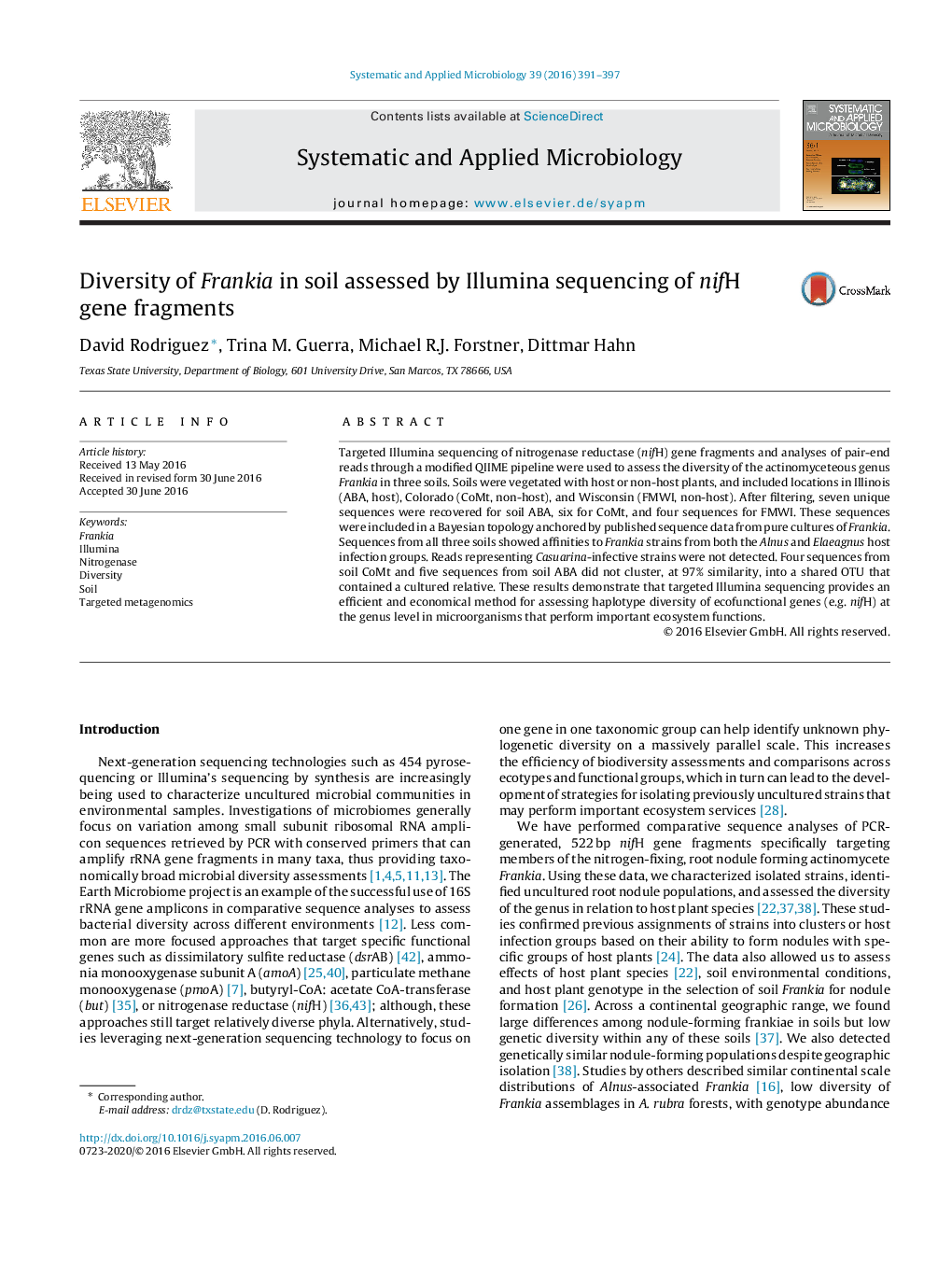| Article ID | Journal | Published Year | Pages | File Type |
|---|---|---|---|---|
| 2062891 | Systematic and Applied Microbiology | 2016 | 7 Pages |
Targeted Illumina sequencing of nitrogenase reductase (nifH) gene fragments and analyses of pair-end reads through a modified QIIME pipeline were used to assess the diversity of the actinomyceteous genus Frankia in three soils. Soils were vegetated with host or non-host plants, and included locations in Illinois (ABA, host), Colorado (CoMt, non-host), and Wisconsin (FMWI, non-host). After filtering, seven unique sequences were recovered for soil ABA, six for CoMt, and four sequences for FMWI. These sequences were included in a Bayesian topology anchored by published sequence data from pure cultures of Frankia. Sequences from all three soils showed affinities to Frankia strains from both the Alnus and Elaeagnus host infection groups. Reads representing Casuarina-infective strains were not detected. Four sequences from soil CoMt and five sequences from soil ABA did not cluster, at 97% similarity, into a shared OTU that contained a cultured relative. These results demonstrate that targeted Illumina sequencing provides an efficient and economical method for assessing haplotype diversity of ecofunctional genes (e.g. nifH) at the genus level in microorganisms that perform important ecosystem functions.
